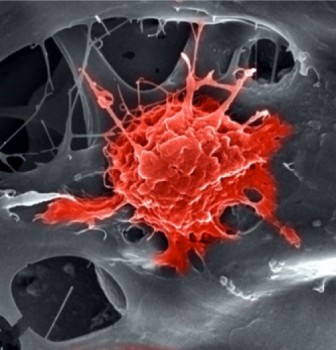
A major success in developing new biomedical implants with the ability to accelerate bone healing has been reported by a group of scientists from the Department of Restorative Dentistry, University of Malaya. This stems from a project partly funded by HIR and also involves Mr. Alireza Yaghoubi, HIR Young Scientist.
According to WHO (World Health Organization), between 2000 and 2050, the world’s population over 60 years is expected to increase from 605 million to more than 2 billion. This trend is particularly more prominent in Asia and Europe where in some countries by 2050, the majority of people will be older than 50. That is why in recent years, regenerative medicine has been among the most active and well-funded research areas in many developing nations.
As part of this global effort to realize better treatments for age-related conditions, a group of scientists from the department of restorative dentistry, University of Malaya and four other universities in the US have recently reported a major success in developing new biomedical implants with the ability to accelerate bone healing.
The two studies funded by the National Science Fund (NSF) in the US and the High Impact Research (HIR) program in Malaysia tackled the issue of bone-implant integration from different angles. In the first study appearing on the front cover of the July issue of Applied Surface Science, researchers demonstrated a mechanically superior bioactive coating based on magnesium silicates rather than the commercially available calcium phosphate which develops microcracks during preparation and delaminates under pressure. The new material owing to its lower thermal mismatch with titanium can prolong the durability of load-bearing orthopedic implants and reduce chances of post-surgery complications.
The other study published in the American Chemical Society’s Applied Materials & Interfaces reported a method for fabricating titanium implants with special surface topographies which double the chance of cell viability in early stages. The new technique is also much simpler as compared to the existing ones and therefore enables the preparation of personalized implants at the fraction of time and cost while offering a higher mechanical reliability.
Alireza Yaghoubi, the corresponding author of both studies believes that we are moving toward a future of personalized products. “It is very much like your taste in music and TV shows. People are different and the new trend in biotechnology is to make personalized medicine that matches the patient’s needs” Yaghoubi said. He continued “With regard to implants, we have the problem of variations in bone density in patients with osteoporosis and in some cases, even healthy individuals. Finding ways to integrate the implants with bone tissues can be challenging. There are also problems with the long-term performance of implants, such as release of debris from bioactive films which can potentially lead to osteolysis and chronic inflammation.”
The new technique employed by the scientists to create titanium implants with desirable surface properties uses microwave heating to create a porosity gradient on top of a dense core. The principles are very similar to a kitchen microwave and how it can make cooking easier, however apparently the fast heating capability is not only useful in cooking but it has numerous industrial applications. Prof. Bhaduri, the Director of Multi-functional materials laboratory at University of Toledo says that they have been using microwave for years to simplify fabrication of complex metallic components. “We needed a way to streamline the process and microwave sintering was a natural fit. With our new method, making the implant from titanium powder in custom sizes and with specific surface topographies is achieved through one easy step.” Bhaduri elaborated.
Researchers are hoping to carry out the clinical trial for this new generation of implants in order to make them available to the market soon. Dr. Kutty, one of the lead authors suggests that there is still room for improvement. Kutty concluded that “Roughened surfaces and bioceramics have desirable effects on osseointegration, but we are not stopping there. We are now developing new ways to use peptides for enhancing the performance of implants even further.” The artwork appeared on the front cover of Applied Surface Science summarizes the benefits of a new bioceramic coating versus the commercially available Calcium Phosphate which develops microcracks during processing and may later cause osteolysis in load-bearing orthopedic implants. Electron micrograph of an osteoblast cell expanding on the implant by grabbing onto the pores.
Story Source:
The above story is based on materials provided by University of Malaya. Note: Materials may be edited for content and length.
Journal References:
- Muralithran G. Kutty, Alok De, Sarit B. Bhaduri, Alireza Yaghoubi. Microwave-Assisted Fabrication of Titanium Implants with Controlled Surface Topography for Rapid Bone Healing. ACS Applied Materials & Interfaces, 2014; 6 (16): 13587 DOI: 10.1021/am502967n
- M. Afshar-Mohajer, A. Yaghoubi, S. Ramesh, A.R. Bushroa, K.M.C. Chin, C.C. Tin, W.S. Chiu. Electrophoretic deposition of magnesium silicates on titanium implants: Ion migration and silicide interfaces. Applied Surface Science, 2014; 307: 1 DOI: 10.1016/j.apsusc.2014.04.033
